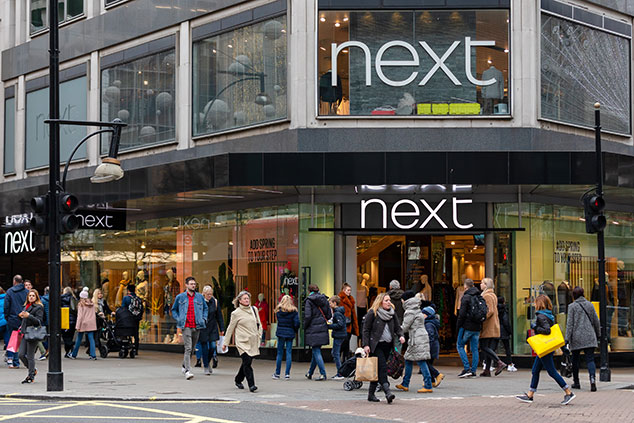
Breast-beating. Profit warnings. Once-loved high street names going to the wall, mourned only in nostalgia-tinged editorials from people who haven’t set foot in a branch of said much-loved retailer since they were at primary school.
So what’s the damage this year?
And has a combination of the endless gloom and Brexit jitters created an opportunity for bold investors?
Times have never ever been easy for the high street
Times are hard for retailers. But times are always hard for retailers.
There are few industries in the world that are better at bemoaning their plight than the retail industry. Farmers might give them a run for their money. But even then, it’s a close-run thing.
Back in the old days – all you millennials out there won’t remember it, it’s far too long ago now – interest rates in the UK were high enough that it was possible for them to go down as well as up. Also, believe it or not, sometimes it wasn’t entirely obvious which way the Bank of England was going to go. Sometimes the members of the Monetary Policy Committee actually had minor disagreements.
As a young journalist, with interest rates at the lofty heights of 4% or even 5%, I knew that every single month I could rely on a press release popping into my inbox from the industry body, the British Retail Consortium, urging the Bank to cut rates.
If the data looked wobbly, the consumer was always on the verge of a disastrous collapse in confidence. If the data looked good, that was all very well, but there were problems “under the surface” that needed to be addressed with an immediate rate cut. Whatever was going on, the high street needed a rate cut and it needed it now.
This talent for woeful tidings has not deserted retailers, even in these low interest-rate times.
As the Financial Times points out, Sports Direct boss Mike Ashley warned at the start of last month that retailers were being “smashed to bits”. Meanwhile, HMV went bust (again). “Yet so far, January has failed to deliver on expectations of a retail bloodbath.”
This morning, motorcar and bike parts retailer Halfords issued a big profit warning, and its share price plunged by as much as 25% in early trading. Department store Debenhams delivered a predictably poor performance, with like-for-like sales down 3.4% over the Christmas period. Shares fell by around 4%.
And the British Retail Consortium warned it had been the worst Christmas since 2008, with overall retail sales flat on last year (although this figure is weighted towards the high street rather than online sales, which seems rather unhelpful, given that the main problem the high street has is competition from the internet).
On the upside, earlier this month, fashion chain Next did better than expected, and today Tesco reported a 2.2% rise in like for like sales. The perennially disappointing yet enduring Marks & Spencer had a “mixed Christmas”, but its full-year profit forecasts survived – a better-than-hoped turnout for food compensated for a worse-than-hoped turnout for clothing.
In other words, some retailers had a bad Christmas. Some retailers had a good Christmas. Given that this is perhaps the most competitive business in the UK, and that this is its busiest time of year, that’s pretty much what you’d expect.
Three questions to ask before you buy any retail stock
The real question is this: are British retailers worth investing in? Overall, I’d say yes. For retail, it’s business as usual. But markets seem to think that we’re on the verge of the apocalypse. So that gap between reality and perception opens up an opportunity for moderately brave investors.
However, you do have to be picky. Firstly, retail is facing structural changes, like lots of businesses. If a retail business is not on top of its internet offering, then it’s in trouble. I’d avoid shops that don’t have a strategy for getting to grips with selling stuff online.
Secondly, as I’ve said before, retail is a very fickle industry indeed. There are a lot of factors over which retailers have no control (the weather is an obvious one, as is the macroeconomic environment). And whereas in a purely cyclical industry, such as mining, a rising tide lifts pretty much all the boats, retail isn’t like that. You can have the best possible backdrop for spending, and some shops still won’t be able to make it work.
Thirdly, it’s easy to approach the business with too much confidence as an investor. Retail is a classic industry where amateur investors fall into the “Peter Lynch trap” – the idea that you should “buy what you know”. Lynch, a hugely successful US fund manager, obviously didn’t mean his advice to mean “if you like shopping at Tesco you should invest in it too”, but that’s how it’s sometimes taken.
The businesses look simple: buy stuff and sell it. But there are lots of ways of making money from that basic business model. Does the business make its profit from selling credit, rather than selling product? How efficient is it? What happens if it can’t shift its stock?
What does that mean? It implies that there are three good starting points to consider before you even think about investing in a retail stock. First, does it have a coherent online strategy? Second, given the unpredictability of the business, does it have competent management with a good record of dealing with nasty surprises and hard times? And finally, do you really understand how it makes its money?
I picked one of my favourite retail stocks as my tip of the year for 2019 in the Christmas issue of MoneyWeek magazine. It’s already had a rather nice start to the year. If you’re not already a subscriber, make sure you sign up now to avoid missing out on any other potentially profitable ideas.